Where in the World Is Vlad Putin? A Biogeographical Investigation
Credit to Author: David Steen| Date: Mon, 21 Aug 2017 13:00:00 +0000
Earlier this month, Russian state media released a variety of pictures and video of Russian president Vladimir Putin boating, swimming, and generally havin’ a good time outside with his shirt off. Even though these images were surely part of Putin’s propaganda campaign to manipulate, misinform, and confuse people in other countries, media outlets all over the world lapped it up.
Why would Putin benefit from the world seeing pictures of him sunbathing? For one, I imagine it’s likely his carefully maintained persona of a tough guy outdoorsman is a contributing factor to his increasing popularity right here in the United States. I began to view the pictures with suspicion and reached out to Sue Jansen, a professor of Media and Communication at Muhlenberg College to find out if I was being paranoid.
“These are hardly candid shots, very much posed for the cameras to project hyper-masculinity and physical fitness,” she told me. “It almost evokes a mythical god-like element suggesting Classical Greek figures.”
If these pictures were carefully packaged to make Putin into a Greek god, I wondered just how far Russia might go to communicate its desired subliminal messages.
I’m a biologist, and so I decided to give his pictures a closer look to find out if there was anything awry or even manufactured about these photos. Putin apparently took his getaway earlier this summer in Siberia, specifically in the Tyva Republic, but why should we take anything about this story at face-value? The field of biogeography, in which scientists study the distribution of species across the planet, offers us one possible method for checking out Putin’s claims. If there were any animal or plant species that appeared to be in a place where they shouldn’t, it would suggest maybe the photo shoot was staged.
I got to work.
One robust greenish fish with bold black bars and bright orange fins immediately caught my eye; the fish looked exactly like one of the Yellow Perch that I used to catch as a kid in New York, and that didn’t make much sense to me.
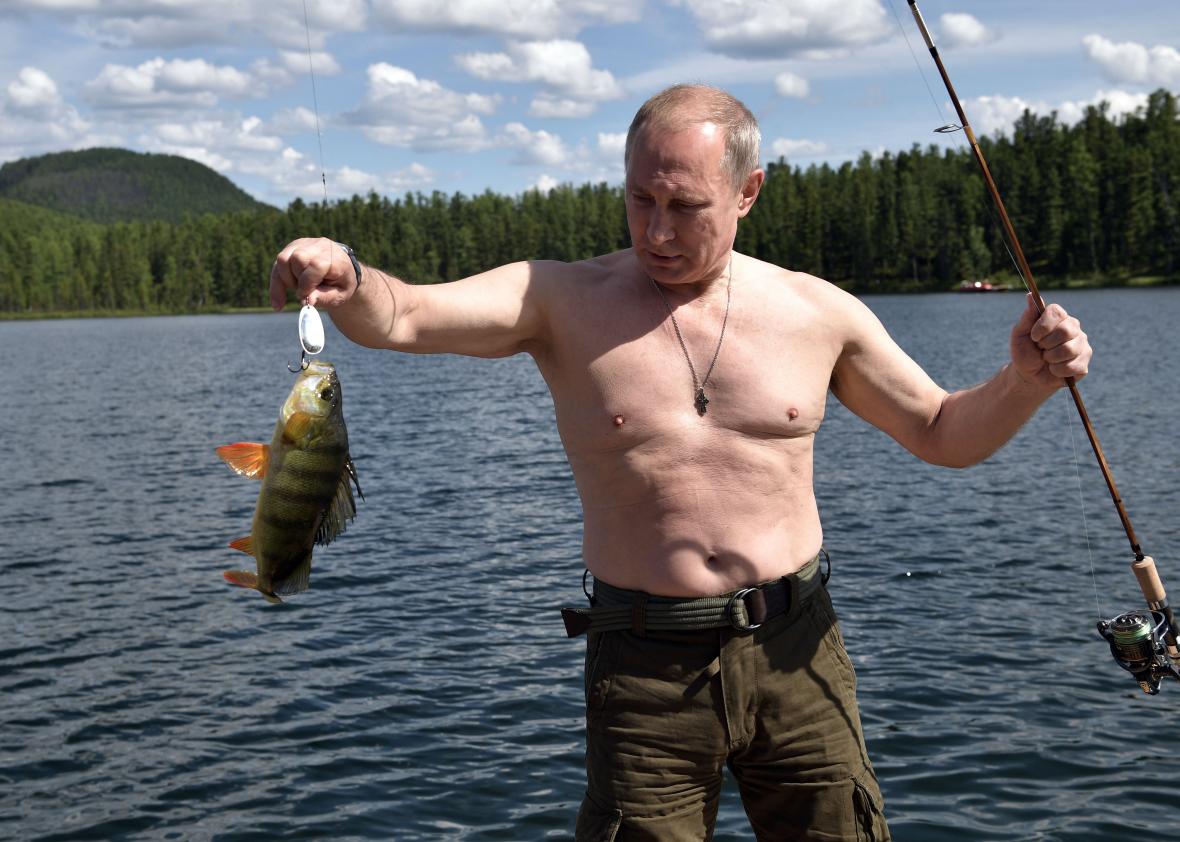
For those scientists that study biogeography, fish may present excellent study subjects. They cannot walk or fly to new areas, so in many cases their current distribution are likely due to historical evolutionary forces. How could Putin be setting the hook on the same Yellow Perch I used to catch in New York?
It didn’t take me very long to figure out that the Yellow Perch has a very close relative in Russia, the European Perch, and they look virtually identical. Case closed. The Yellow Perch mystery was solved but gears were turning nonetheless. If I identified all the species shown in Putin’s vacation pictures, I figured could determine their geographic ranges. Wherever all those ranges overlapped must be where Putin had been, and if Putin’s story was correct the Tyva Republic should be within that area of overlap. Presumably the CIA has analysts that do this kind of work, but it didn’t respond to my request for comment when I asked it for comment.
We could learn more from the fauna than just location. Many species have seasonal changes in behavior or appearance that corresponds with their reproductive season. If any of the fish in the pictures were spawning, I could potentially use that information to confirm when Putin caught them.
I thought I had a pretty good idea regarding what fish we were looking at but I needed expert backup, so I reached out to my friend Dr. Solomon David, a fish ecologist. Solomon confirmed my Eurasian Perch identification but pointed out that this species, a popular sportfish, has been stocked in many areas outside of its native geographic range; this complicates our ability to pinpoint exactly where this fish was caught.
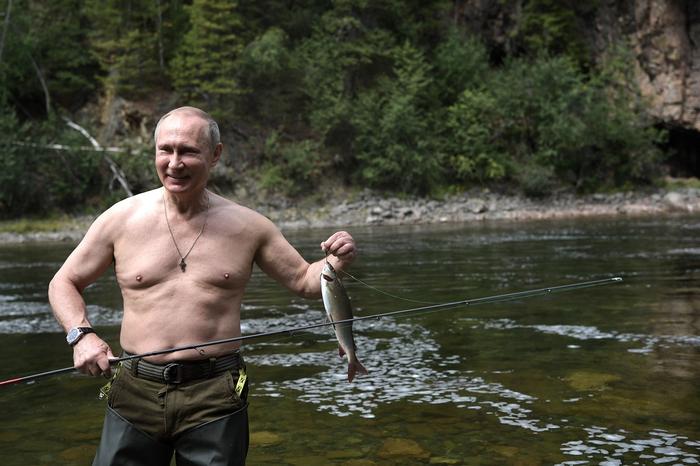
Solomon also identified the hapless fish that had allegedly been pursued underwater by a spear-wielding Putin for two hours: Northern Pike. Interestingly, this sleek predator has an incredibly wide distribution throughout not only Russia but also Europe and North America.
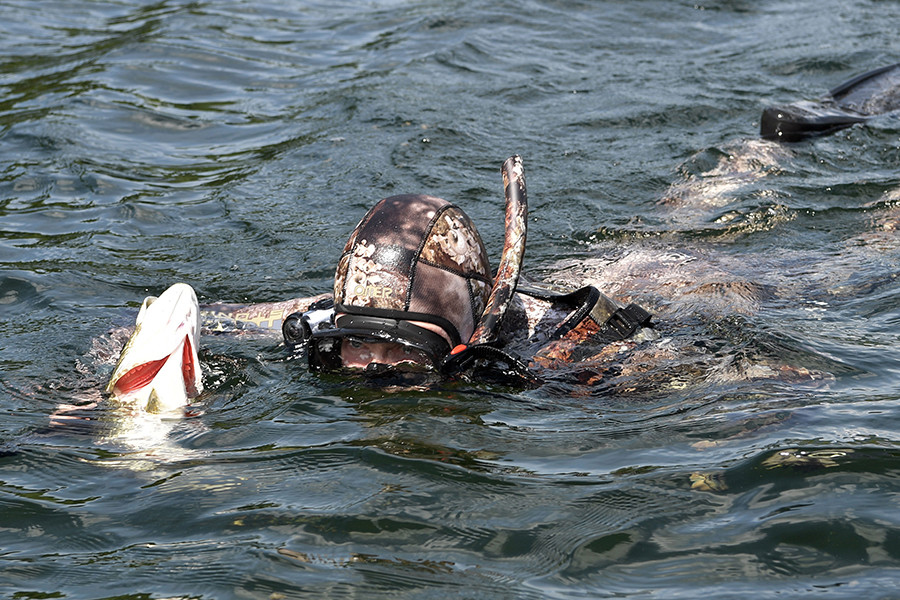
Finally, Solomon shed some light on the third fish we can see, a relatively generic-looking silver fish hanging from Putin’s fishing pole. To him it looked most like an Arctic Cisco, another species with a wide distribution at high latitudes across the globe. After crushing my hopes of precisely pinpointing Putin’s location, Solomon issued the coup de grâce: none of the fish appeared to be in spawning condition, so we couldn’t tell much about the timing of the pics either.
Of particular interest was the branch that Putin carried in his breast pocket throughout at least some of his adventures.
I moved on to trying to identify the plants and trees, but this can be exceptionally tricky. Multiple closely-related species can appear quite similar, and in many cases even specialists need to have the plants in front of them so they can go through the laborious process of identifying them with the use of a dichotomous key. That wasn’t possible here. In addition, some plants are only easily recognizable when they are fruiting and showing off their characteristic berries. Again, no luck. In desperation, I reached out to a few botanists for help; they helped me understand that the trees present in the background were either spruce or fir trees, and that those species are common in the boreal forest biome typical of Siberia, so that checks out. But, this biome extends far beyond Russia and similar landscapes occur in North America.
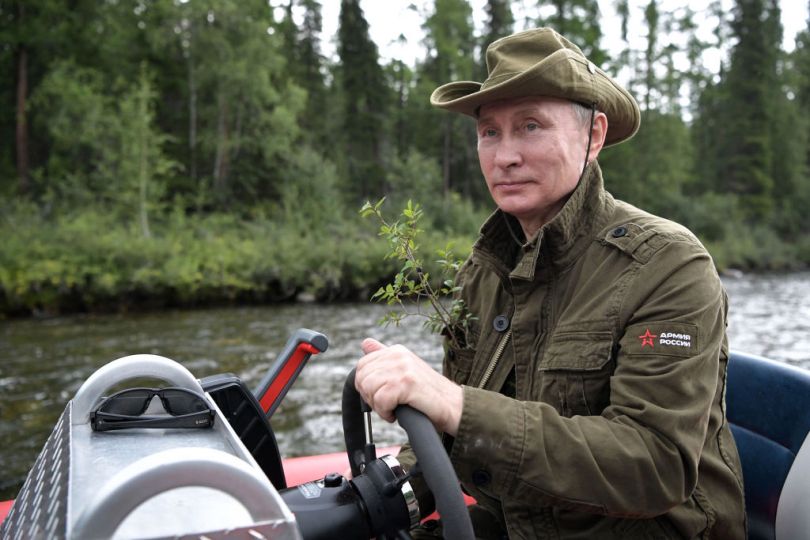
Of particular interest was the branch that Putin carried in his breast pocket throughout at least some of his adventures. My botanist contacts couldn’t decide if it was from blueberry or privet (a shrubby-plant from Asia that has now been introduced throughout the world). For what it’s worth, blueberries and privet are closely related, and RIA Novosti also reported it was blueberry or huckleberry. However, blueberries are rare in Russia; on the other hand, they could have been closely-related bog bilberries. Similarly, huckleberries are a North American plant, but closely-related and virtually identical species in the same family can be found just about anywhere.
After going in circles trying to identify the plants and trying to figure out what closely related species they could be confused with, it became clear to me that plants are unlikely to be a reliable means of gathering detailed intelligence on foreign leaders unless perhaps a particularly rare and unique species happens to be captured on film, like a corpse flower.
Although I felt that the fish and plants offered the best opportunity to gather interesting information, I was undeterred and sent this picture of Russian defense minister Sergei Shoigu laughing at a mushroom to Damaris Brisco, naturalist and mushroom forager, in the hopes of learning more about the nondescript brown fungus. She told me it “could be any number of what’s known colloquially as ‘boletes’…They’re widespread and fairly common in both deciduous and coniferous forests of Europe. Unfortunately, ‘brownish cap, yellow pores’ describes a whole lot of Russian boletes.”
Interesting mycological information but another dead end without a closer look at the mushroom’s morphology, particularly under its cap.
Overall, I have to conclude that between the difficulty we had in identifying the plants in Putin’s vacation pictures and the fish having wide geographic distributions, it doesn’t look like biogeography is going to help us catch Putin in a lie.
You win this time Putin; looks like the Kremlin’s story about your vacation checks out and I wasn’t able to inflict any international shame upon you for any piscine fabrications; but maybe now you’ll will stay on the straight and narrow, knowing we’ve got America’s best botanists and ichthyologists keeping their eyes on you.
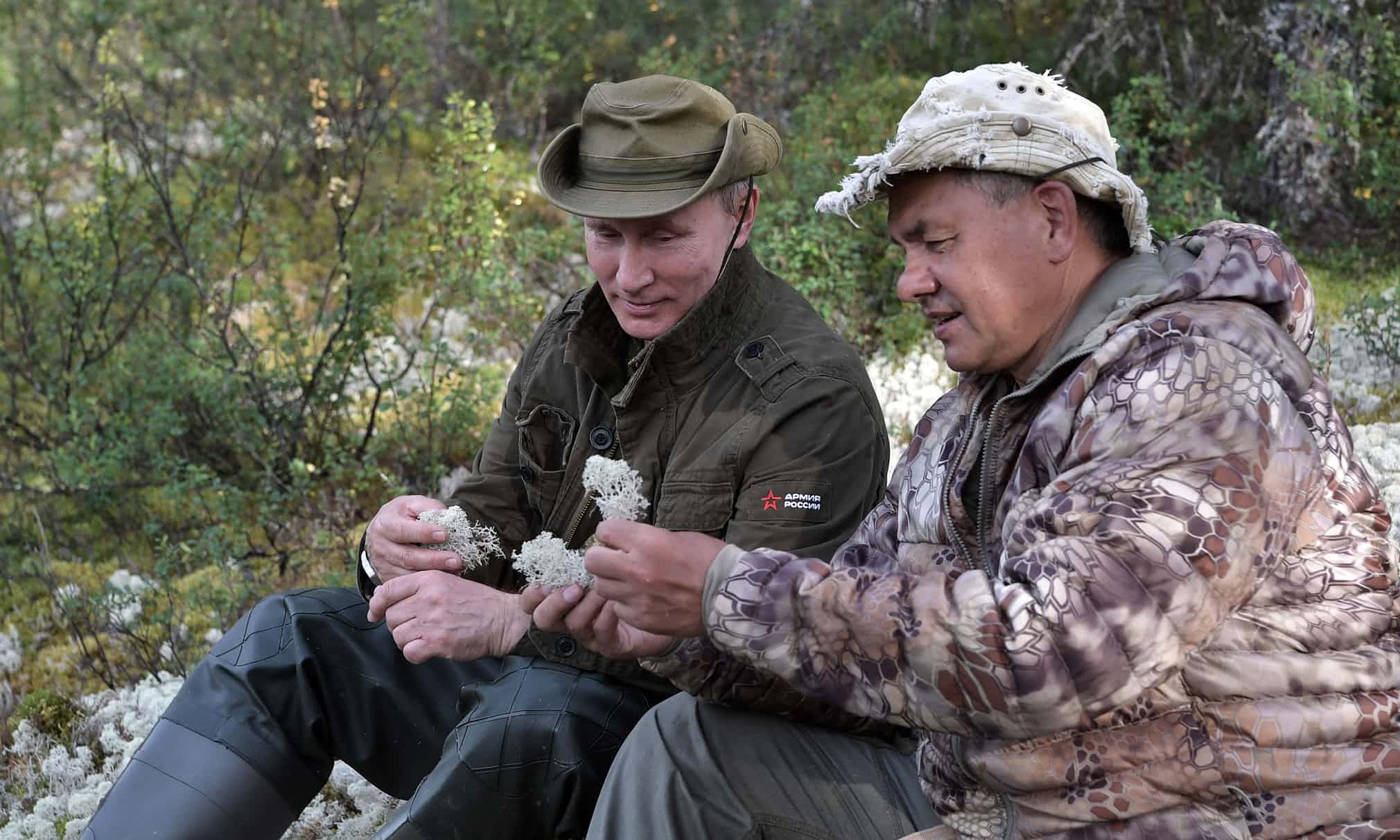
Wait, hold up…does anyone know a lichenologist?